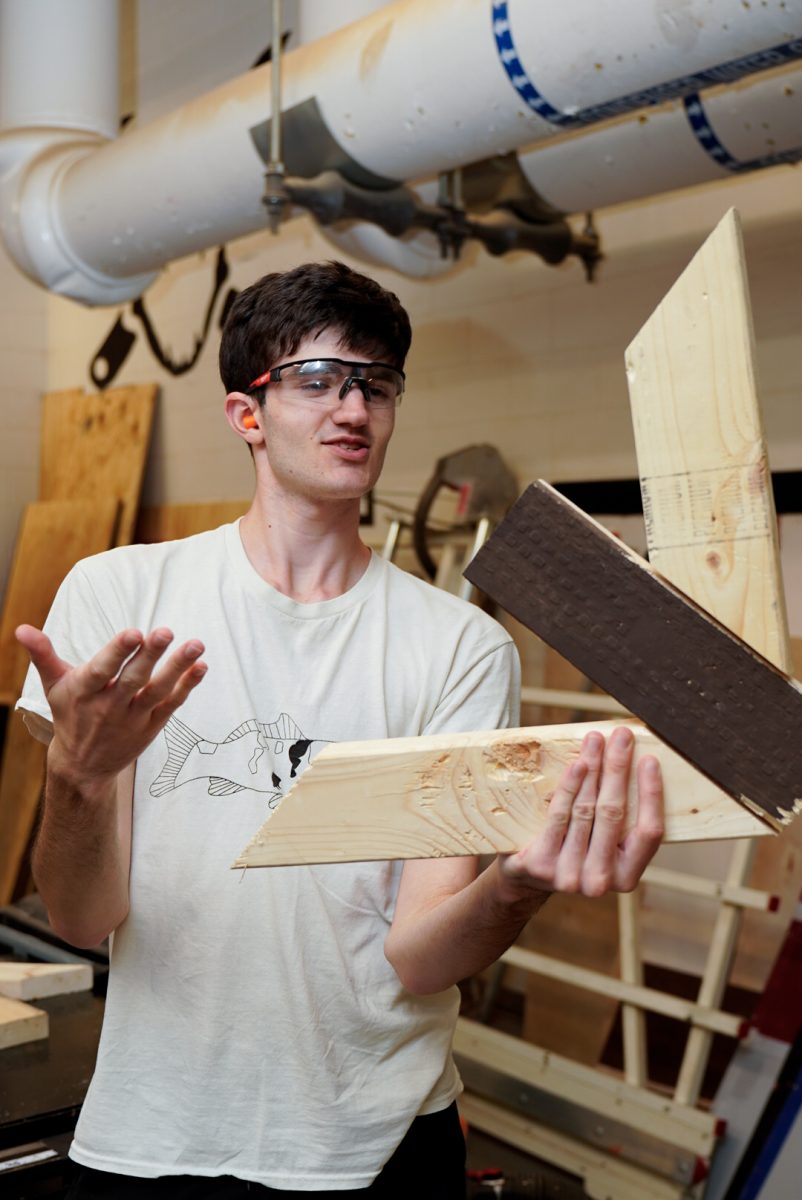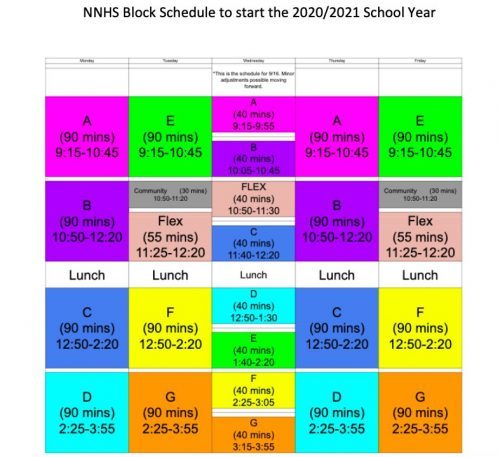A student sits at their dining room table and turns on their computer. Their microphone and headphones turn on as well. However, they are not planning to play a video game or go online shopping. Instead, this student enters a new school day. School without heavy backpacks and crowded halls. School that is online. This is the experience for students at North—a stark contrast to what they are used to from previous years.
After some discussions, the North community decided to learn remotely to ensure the safety and health of students and staff with the implementation of an initial scheduling model to fit the remote setting. Although distance learning started in the spring of 2020, this fall was the beginning of an entire new school year. With the new distance learning guidelines, students are attempting to adapt to this new way of schooling. Both students and staff have mixed opinions and feelings about this adjustment.
For the remote learning schedule, on Mondays, Tuesdays, Wednesdays and Thursdays, students meet with their classes in 90-minute blocks. Though these blocks are longer, they allow each class to meet only three times a week, rather than the typical four. However, the change from 55-minute to 90-minute classes is not an easy feat to adapt to for some students and teachers.
According to freshman Ilai Rabinowitz, “it is hard to sit in front of a computer for 90 minutes. Towards the end of the day, it gets even harder to stay focused.”
Latin teacher Timothy Lesinski is similarly “not a fan of the 90-minute blocks. I think that the time is too long, and I suspect that the very packed schedule will have a negative psychological impact on the students as the year progresses, causing more stress and fatigue.”
To combat students becoming distracted from learning during the long 90-minute class time, teachers have been told not to teach for the entire block. According to French teacher Isabelle Ronfard, teachers have been instructed to teach a little at first, let the students complete some independent work, and then resume teachings. That way, students do not sit through a 90-minute lecture.
In addition, most teachers also provide a small five to ten minute break in the middle of class. Lesinski said that he gives breaks because “I have a hard time staying focused for that long on Zoom myself, and I see a break as a necessary way to help refocus and avoid Zoom fatigue. I’m also very concerned about the impact on students’ eyes of excessive screen time, so a break is one way to address that.”
Breaks allow students, as well as teachers, to get a quick rest from the screen. Rabinowitz said, “I like to walk my dog, get a drink and snack, or listen to music during my breaks.” Some teachers often recommend stretching because everyone is sitting in one spot for so long.
Along with in-class breaks, there is a lunch break half way through the day. The time allotted for lunch during online school is 20-30 minutes. Before this online transition, lunches were 30-40 minutes. Some students feel that the online lunch blocks are too short. This drop in time significantly impacts the amount of time students and staff have to make and eat lunch.
“I feel rather rushed when it comes to the amount of time I have,” said junior Maayan Falk-Judson.
In the in-person setting, students can buy pre-made meals from the cafeteria or bring their own lunches, which can be eaten right away. With at-home classes, families are not making lunch early in the morning. Students have to make lunch, as well as eat it, all within the 30 minutes, making the time-slot feel rushed.
Students and staff have also encountered other timing issues with the Wednesday schedule, another unique aspect of this year. As of October 7, school on Wednesdays ends earlier, at 3:15, with all seven classes in 35-minute blocks. Wednesday classes were previously 40 minutes long, a change made by the district.
These shortened Wednesday blocks prove challenging. This is especially true for teachers such as Lauren Baugher, a Health and Sexuality teacher. Baugher said, “I can not teach the material of a 40-minute class to a 35-minute one. Everything is slower online. We, as teachers, have to jump between screens, deal with internet issues, and there is often a delay between people speaking that doesn’t happen when we are in-person.” She added that teachers are also trying to answer the private chat messages and teach at the same time.
Additionally, Baugher mentioned that due to technical difficulties, classes are filled with phrases such as “I can’t hear you,” “you’re choppy,” or “the screen isn’t showing,” which takes up class time.
Sophomore Ameilia Singer added, “I don’t think the change in the Wednesday schedule makes much of a difference at all. In the classes that were 40 minutes, we didn’t get to do much anyway.”
Though this school year may be different and constantly changing in accordance to updating news, both students and teachers at North are working hard to make the most of it. One thing is for sure: the North community is working together to support one another during this unprecedented time.








































